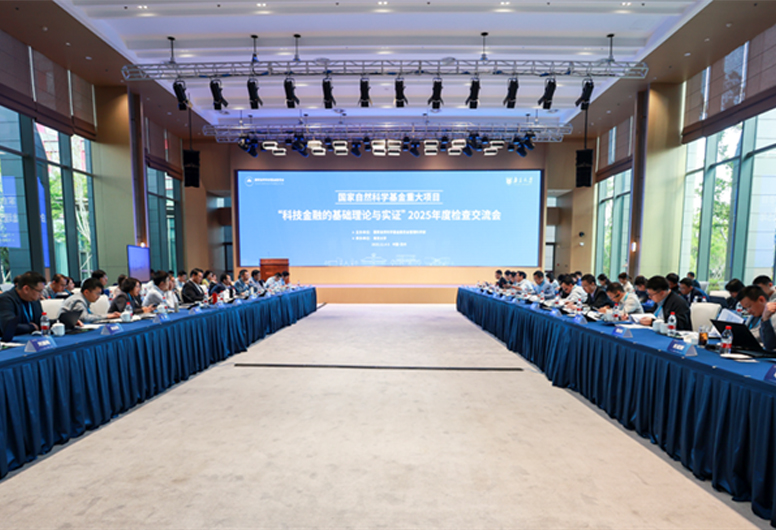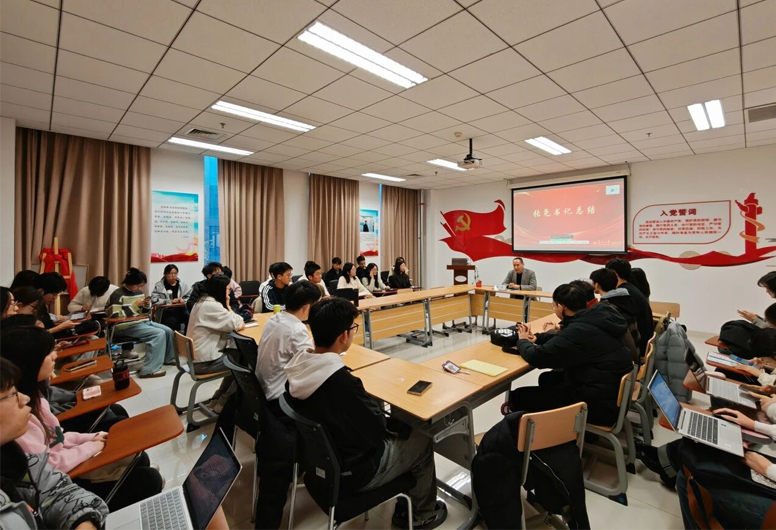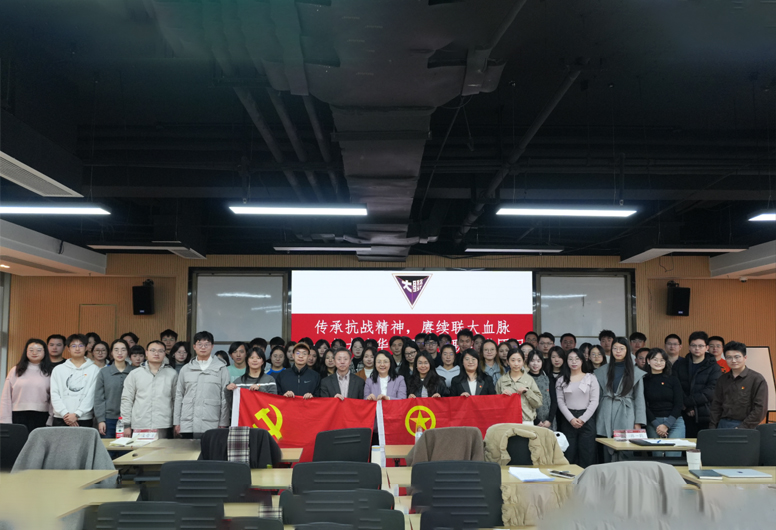学院教师在JBF等期刊连续发表系统性风险及疫情影响的创新性研究成果
我院段月姣助理教授与李欣明准任副教授等合作撰写的论文“Bank systemic risk around COVID-19: A cross-country analysis” 于2021年12月在Journal of Banking and Finance (JBF)正式刊印。该文章是国际上首个探索COVID-19对银行系统性风险影响的研究。结果表明,疫情这一公共健康危机增加了各国的系统性金融风险。特别地,对于规模大、杠杆率高、贷款占比高、网络中心性低的银行来说,疫情对系统稳定性的不利影响更显著。然而,银行监管制度(如:存款保险制)、所有权结构(如:外资银行和政府所有银行)以及非正式规则(如:国家文化和居民间的信任)能明显降低疫情对金融系统的冲击。该研究为金融系统再次遭受重大冲击时,提供科学的防范与调节方案。
我院范小云教授与段月姣助理教授等合作撰写的论文《系统性风险传染机制中的级联故障研究—兼论“多而不能倒”与“大而不能倒”》发表于《经济学动态》2021年第9期,该研究将违约损失风险参数内生于网络,兼顾偿还风险传导和流动性风险传染渠道,构建了复杂银行系统网络的级联故障模型,并且结合可得的我国263家商业银行财务数据进行仿真模拟,量化了共同冲击、特定银行倒闭等几个情境下的级联故障程度。研究发现:第一,我国银行系统“多而不能倒”不仅与“大而不能倒”并存,且独立于“大而不能倒”而存在。第二,中小银行相对于大银行能承受的破产故障边界更低、波动更小,更容易发生联合倒闭情形。因而,研究中小银行联合倒闭极具现实意义。第三,大型银行是众多中小银行倒闭的第一道防线,而中小银行的救助成本远低于大型银行。因此,防范化解重大风险时要重视多家中小银行风险集聚现象而规避传染源,兼顾“多而不能倒”和“大而不能倒”,低成本救助,从而实现风险在银行间的缓冲疏散和对抗吸收。
我院范小云教授与段月姣助理教授等合作者的论文 “Do efficient banks create more liquidity: international evidence” 于2021年1月在Finance Research Letters (FRL)在线发表。银行通过创造流动性促进实体经济增长。文章首次从效率的角度,分析了决定银行流动性创造的因素。研究证实,效率较低的银行为公众创造的流动性较少,因而可以通过降低成本负担或改善盈利效率等方式,促使银行来更好地履行其为公众创造流动性的职能。
我院段月姣助理教授与刘澜飚教授等合作撰写的“COVID-19 Sentiment and the Chinese Stock Market: Evidence from the Official News Media and SinaWeibo”于2021年6月在Research in International Business and Finance(RIBAF)在线发表。该研究探索了中国股市对疫情情绪的反应。应用机器学习方法结合官方新闻媒体和新浪微博的630万条新闻,构建了两个新型冠状病毒 (COVID-19)疫情情绪指标,以此捕捉疫情期间,健康冲击下的投资者情绪,具有及时性和前瞻性。研究发现,2019年12月17日至2020年3月13日期间,COVID-19情绪对股票收益率和换手率具有显著积极预测作用。与这一预测一致的是,融资融券交易活动随着正面情绪的增加而不断增强。总的来说,大流行疾病对金融市场的冲击影响会通过媒体舆情被放大。
我院段月姣助理教授与准任副教授李欣明等合作的论文“Assessing machine learning for forecasting economic risk: Evidence from an expanded Chinese financial information set” 于2021年6月在Finance Research Letters (FRL)在线发表,研究发现用于预测经济风险的数据集可以大大改进。文章构建了关于中国系统性风险的扩展信息集,证实该信息集包含预测宏观经济的额外信息。与传统方法相比,机器学习显著的改善了预测宏观经济的能力,分位数回归森林展示出优越的样本外预测精度。这一研究吸引力众多决策者和投资者,为其决策提供有力的科学依据。
论文相关信息如下:
文章1:Bank systemic risk around COVID-19: A cross-country analysis
作者:
Yuejiao Duan, Sadok El Ghoul,
Omrane Guedhami, Haoran Li, Xinming Li
摘要:Using 1,584 listed banks from 64 countries during the COVID-19 pandemic, we conduct the first broadbased international study of the effect of the pandemic on bank systemic risk. We find the pandemichas increased systemic risk across countries. The effect operates through government policy response and bank default risk channels. Additional analysis suggests that the adverse effect on systemic stability is more pronounced for large, highly leveraged, riskier, high loan-to-asset, undercapitalized, and low network centrality banks. However, this effect is moderated by formal bank regulation (e.g., deposit insurance), ownership structure (e.g., foreign and government ownership), and informal institutions (e.g.,culture and trust).
文章2:系统性风险传染机制中的级联故障研究—兼论“多而不能倒”与“大而不能倒”
作者:范小云,荣宇浩,段月姣
摘要:本文将违约损失风险参数内生于网络,兼顾偿还风险传导和流动性风险传染渠道,构建了复杂银行系统网络的级联故障模型,并且结合可得的我国263家商业银行财务数据进行仿真模拟,量化了共同冲击、特定银行倒闭等几个情境下的级联故障程度。研究发现:第一,我国银行系统“多而不能倒”不仅与“大而不能倒”并存,且独立于“大而不能倒”而存在。第二,中小银行相对于大银行能承受的破产故障边界更低、波动更小,更容易发生联合倒闭情形。因而,研究中小银行联合倒闭极具现实意义。第三,大型银行是众多中小银行倒闭的第一道防线,而中小银行的救助成本远低于大型银行。因此,防范化解重大风险时要重视多家中小银行风险集聚现象而规避传染源,兼顾“多而不能倒”和“大而不能倒”,低成本救助,从而实现风险在银行间的缓冲疏散和对抗吸收。
文章3:Do efficient banks create more liquidity: international evidence
作者:
Yuejiao Duan, Xiaoyun Fan, Xinming Li, Yuhao Rong, Benye Shi
摘要:It is revealed in the literature that bank liquidity creation promotes growth in the real economy.From the efficiency perspective, this work analyzes another potential determinant of bankliquidity creation. We find that banks with lower efficiency create less liquidity for the publicafter controlling for bank-level and country-level characteristics. The results are robust for subsample tests and alternative efficiency measures. It indicates that banks may better fulfill their liquidity creation function for the public either by reducing their cost burden or by improving their profit efficiency level.
文章4:COVID-19 Sentiment and the Chinese Stock Market: Evidence from the Official News Media and Sina Weibo
作者:Yuejiao Duan, Lanbiao Liu, Zhuo Wang
摘要:This study quantitatively measures the Chinese stock market’s reaction to sentiments regarding the Novel Coronavirus 2019 (COVID-19). Using 6.3 million items of textual data extracted from the official news media and Sina Weibo blogsite, we develop two COVID-19 sentiment indices that capture the moods related to COVID-19. Our sentiment indices are real-time and forward-looking indices in the stock market. We discover that stock returns and turnover rates were positively predicted by the COVID-19 sentiments during the period from December 17, 2019 to March 13, 2020. Consistent with this prediction, margin trading and short selling activities intensified proactively with growth sentiment. Overall, these results illustrate how the effects of the pandemic crisis were amplified by the sentiments.
文章5:Assessing machine learning for forecasting economic risk: Evidence from an expanded Chinese financial information set
作者:Yuejiao Duan, John W. Goodell, Haoran Li, Xinming Li
摘要:While data sets used for forecasting can now be greatly improved, expanding data and information size also exposes weaknesses in traditional forecast models. We assess machine learning methods for forecasting monetary policy actions and concomitant macroeconomic risks. We construct an expanded information set on Chinese systemic risk, confirming that this set contains additional information useful for macroeconomic forecasting. We find that machine learning processes offer significant improvement for macroeconomic forecasting, with quantile regression forest exhibiting superior out-of-sample prediction accuracy compared with traditional methodologies. These findings will be of great interest to policy makers and investors.










